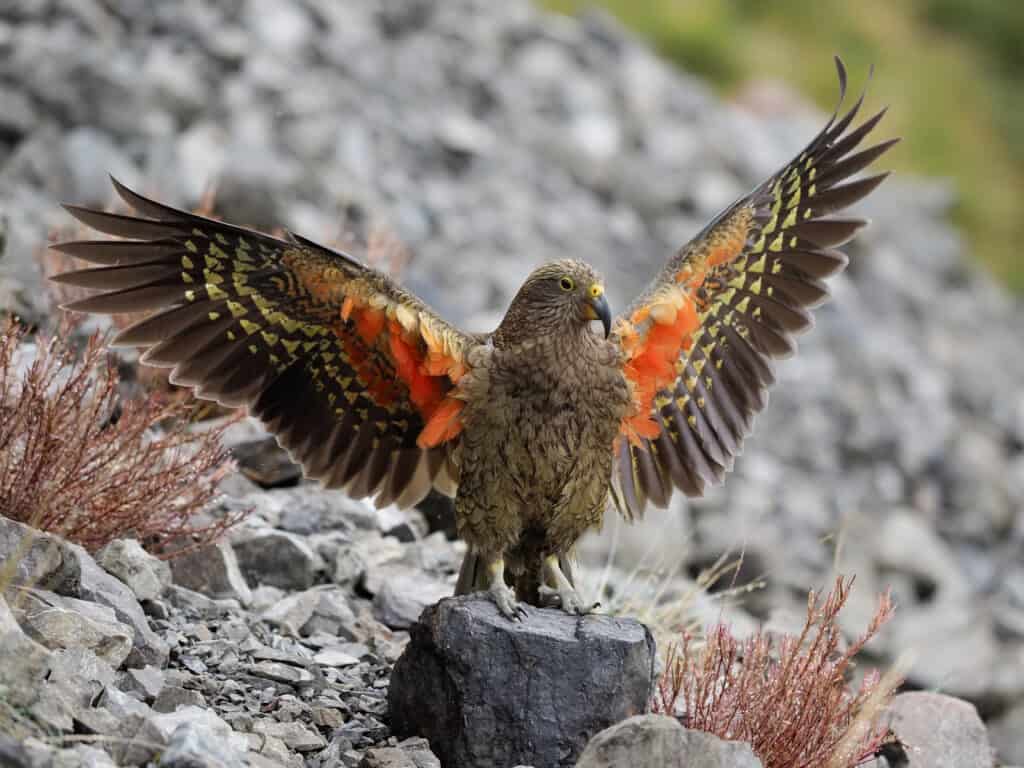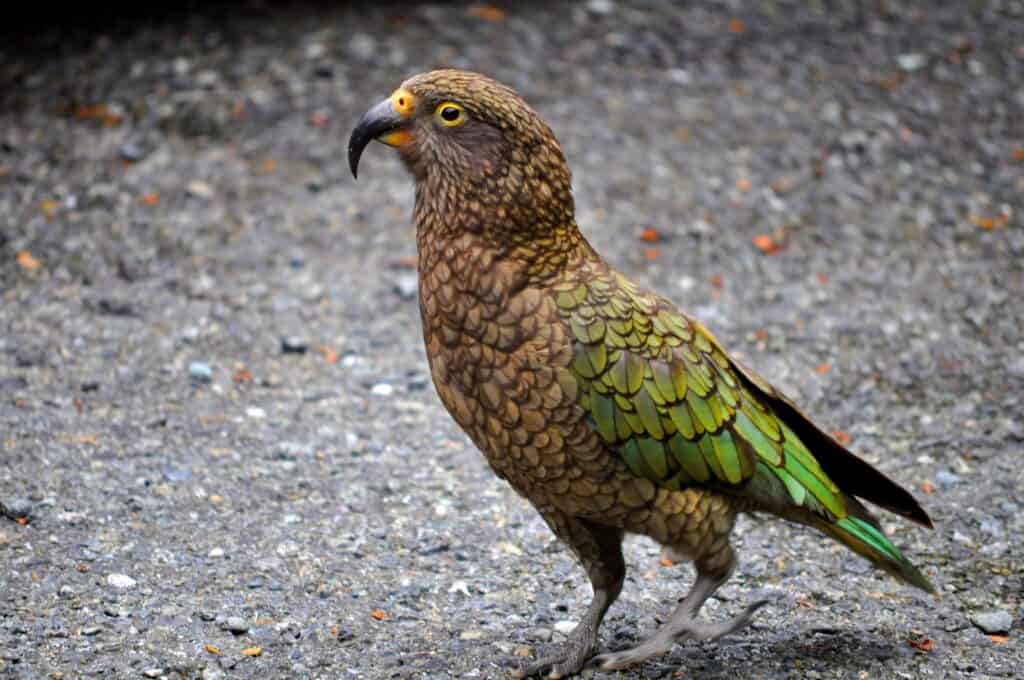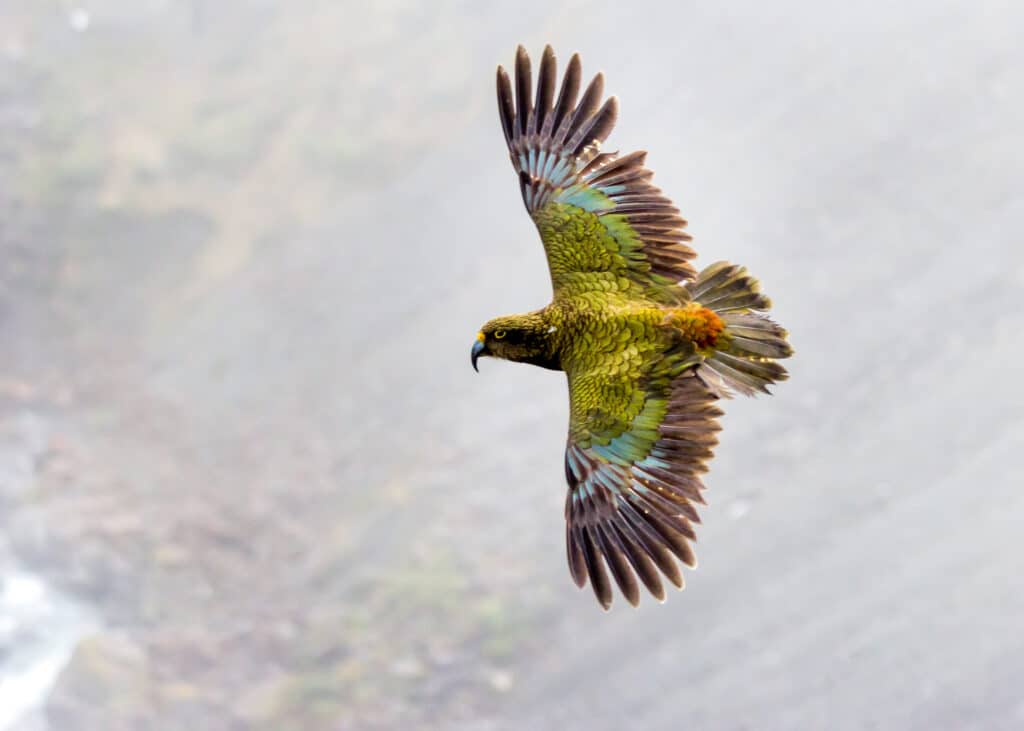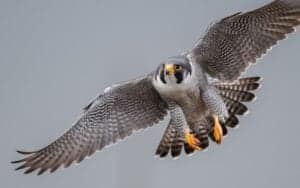Some animals live just to exist, eat, sleep, and reproduce. While others, like chimps, dogs, and birds, show incredible intelligence. When researching these fascinating creatures that inhabit our planet, we realize that animals are much smarter and more complex than previously thought. Animals have remarkable capabilities, from recognizing faces and naming family members to learning sign language and comprehending death. Birds are often recognized as some of the most intelligent beings on our planet, aside from humans, and understand far more than what has been discovered. So, what’s one of the smartest birds on earth? Meet the kea bird. They are clever and full of mischievousness. Find out how!
What Is the Smartest Bird on Earth? Learn All About the Kea Bird

While they don’t talk like most parrot species, keas communicate in other ways and are said to have intelligence on par with a four-year-old human child.
©Robert L. Sanson/Shutterstock.com
The kea bird is one of the smartest birds on earth. They have some of the largest brains and the highest cognitive abilities in the bird world. While they don’t talk like most parrot species, keas communicate in other ways and are said to have intelligence on par with a four-year-old human child. When closely comparing their abilities in the animal world, they are most similar intelligence-wise to primates.
New research proves that keas can integrate information across different cognitive domains. Keas that participated in domain-general tests confirmed that they understand probability, and can combine information from multiple sources to make judgments. This ability has never been witnessed outside of the great apes. Researchers believe that studying these birds opens up the possibility of how intelligence evolves. Eventually, their goal is to create artificial thought processes modeled after keas.
Keas can solve logical puzzles, work as a group to meet a common goal, prepare and use tools, and find innovative ways to receive food. These birds live in harsh environments in the mountains and learn quickly to solve problems as a means of endurance. But their sharp-witted behavior is more than a survival trait. These parrots are playful and curious. If you ever get the chance to visit their habitat, you may see them chasing each other and playing with objects like children.
Where Do Keas Live?
Keas are the only alpine parrot and one of nine parrot species endemic to New Zealand. They live on the South Island in forested and alpine regions, from lowland river valleys and coastal forests to the highlands. But over the centuries, humans have run them out of their lowland habitats and forced them to reside further into the mountains above the treeline.
What Do Keas Eat?
These omnivorous genii are not above feeding on the carcasses of sheep or other animals. They also enjoy digging for grubs from rotting wood or from the earth. Kea are also fond of fruit, seeds, nectar, and leaves.
What Is the Kea Known For?
Keas have a reputation for being cheeky and mischievous, receiving titles like “clown of the Alps” and “naughty alpine parrot.” But for a good reason. Most find them adorable and charming, while others see them as annoying and damaging. However, the main consensus is that the kea is a lovable pest.
They are unafraid of humans and enjoy messing with (and stealing from) tourists. Near ski resorts, they will take off with clothing items, wallets, passports, food, and anything else small enough to carry. Aside from stealing, keas also rip holes in tents, break into homes via doggy doors, throw rocks at people, chew off car antennas, scavenge through trash cans, and pry pieces of rubber off car tires.
The kea can live up to 20 years, but their average lifespan is only five years. This species lives a challenging life, falling victim to predators like possums and stoats and living in harsh mountain environments. They are scrappy because they have to be to survive. Unfortunately, some humans take advantage of their trusting behavior and kill them on purpose. And before 1970, over 150,000 keas were persecuted due to a bounty. Today they have protection under the Wildlife Act, and researchers estimate their population stands at around 7,000 individuals.
Are Keas Smarter Than Crows?

Crows
and ravens have different personality traits and anatomical features from keas.
©Olivades/Shutterstock.com
Based on several studies, corvids and parrots exhibit similar intelligence. And both birds have problem-solving skills that equate to the great apes. However, the answer to this question is much more complex than a simple “who’s smarter” comparison. Crows and ravens have different personality traits and anatomical features from keas. And they also live in contrasting habitats. Crows are much more cautious when exploring new things due to their dangerous urban environment, while keas are adventurous and dive into new tasks. Crows are also more likely to use tools due to their beak shape. But both show extreme brain power, using objects and reasoning to solve problems in their own way.
Bonus: Can Keas Be Kept as Pets?

Keas are an endangered species and cannot be kept as a pet.
©Lost in Time/Shutterstock.com
Keas are such appealing birds! They are as beautiful as they are intelligent and their expressive faces reflect mischievous personalities full of fun! It seems like they could be a perfect companion for an experienced bird lover – but unfortunately, they are not.
Keas don’t thrive or breed well in captivity and are only kept for conservation purposes. These birds have big personalities and love their freedom! After many years of being hunted for being so destructive – Keas are now an endangered species and it is illegal to keep one as a pet. Keas are always ready to be a friendly acquaintance to humans and will often approach people without fear. You can tell by the cheeky look on their cute faces that they consider us to be a source of mirth and merriment!
The photo featured at the top of this post is © Olivia Oates/Shutterstock.com
Sources
- The University of Auckland Research Repository, Available here: https://researchspace.auckland.ac.nz/handle/2292/53194
- Springer Nature, Available here: https://link.springer.com/article/10.3758/BF03196007
- Springer Nature, Available here: https://link.springer.com/article/10.1007/s10071-006-0033-8
Thank you for reading! Have some feedback for us? Contact the AZ Animals editorial team.






